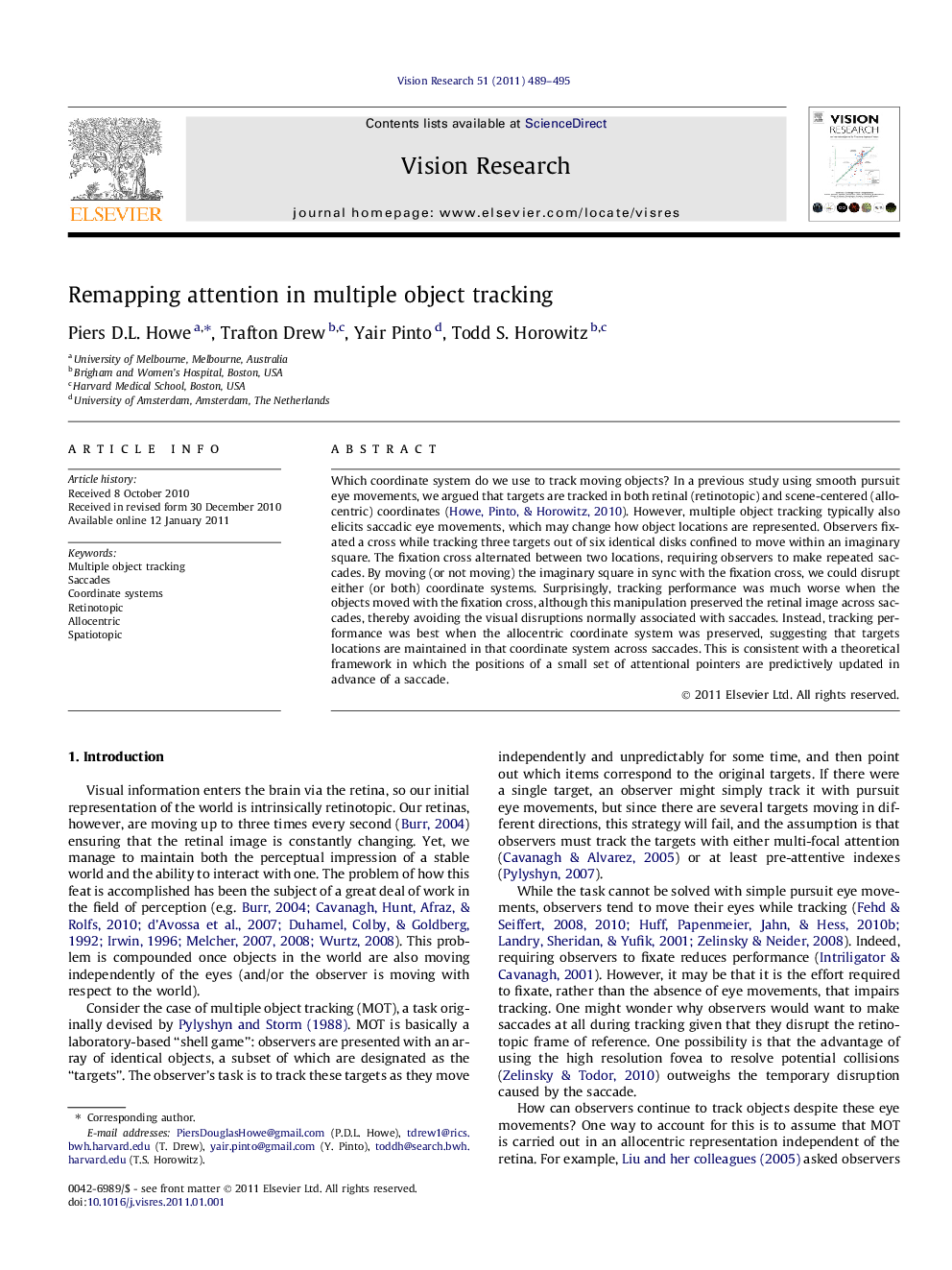| Article ID | Journal | Published Year | Pages | File Type |
|---|---|---|---|---|
| 4034249 | Vision Research | 2011 | 7 Pages |
Which coordinate system do we use to track moving objects? In a previous study using smooth pursuit eye movements, we argued that targets are tracked in both retinal (retinotopic) and scene-centered (allocentric) coordinates (Howe, Pinto, & Horowitz, 2010). However, multiple object tracking typically also elicits saccadic eye movements, which may change how object locations are represented. Observers fixated a cross while tracking three targets out of six identical disks confined to move within an imaginary square. The fixation cross alternated between two locations, requiring observers to make repeated saccades. By moving (or not moving) the imaginary square in sync with the fixation cross, we could disrupt either (or both) coordinate systems. Surprisingly, tracking performance was much worse when the objects moved with the fixation cross, although this manipulation preserved the retinal image across saccades, thereby avoiding the visual disruptions normally associated with saccades. Instead, tracking performance was best when the allocentric coordinate system was preserved, suggesting that targets locations are maintained in that coordinate system across saccades. This is consistent with a theoretical framework in which the positions of a small set of attentional pointers are predictively updated in advance of a saccade.
Research highlights► During saccades, expected tracking to occur only in retinotopic coordinates. ► Instead, found that tracking occurred only in scene-centered (allocentric) coordinates. ► Suggests tracking mediated by a small set of attentional pointers. ► Pointers predictively updated in advance of each saccade.
